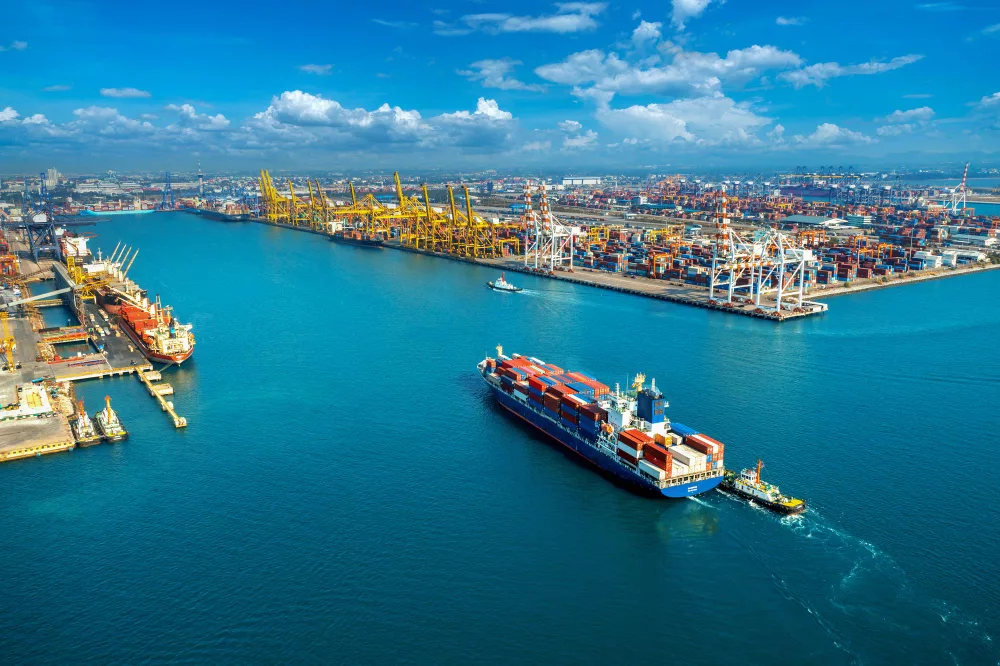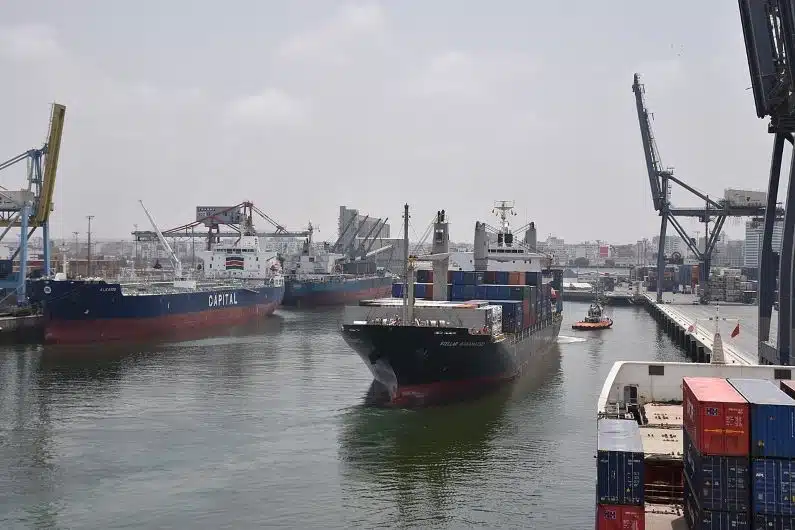Shipping to Sweden is significant for international trade, benefiting businesses and individuals alike. This article explores its importance, discussing the advantages it offers. It covers various topics such as shipping routes, customs procedures, documentation requirements, shipping costs, and selecting reliable shipping partners.
Shipping From USA to Sweden
Overview of Shipping Routes and Modes
When shipping from the USA to Sweden, various transportation modes are available, including air, sea, and land. Each mode has its own advantages and considerations, and understanding them is essential for successful shipping.
Air Shipping
Air shipping offers the fastest transit time, making it ideal for time-sensitive and high-value shipments. Major international airports like Stockholm Arlanda Airport serve as key gateways. However, air shipping is generally more expensive and has size and weight limitations.
Sea Shipping
Sea shipping is a common and cost-effective option, with ports like Gothenburg and Stockholm facilitating maritime trade. Full Container Load (FCL) and Less than Container Load (LCL) options are available. FCL provides more control and security for larger shipments, while LCL is cost-effective for smaller shipments. Sea shipping has longer transit times but is suitable for bulk shipments and non-urgent deliveries.
Land Shipping
Land shipping involves truck or rail transportation, often combined with sea shipping. Goods are transported to neighboring countries like Denmark or Germany before reaching Sweden by sea. Land shipping is advantageous for specific locations with good road or rail connections. It is suitable for time-sensitive shipments that are not as urgent as air freight.
When it comes to shipping from the USA to Sweden, it’s essential to have a clear understanding of the factors that influence shipping costs. Shipping expenses can vary depending on several key elements, including distance, weight, dimensions, and the chosen mode of transport.
Additionally, there are various charges involved in international shipping, such as freight charges, customs duties, taxes, and handling fees. Let’s explore these factors in detail and gain insights into how shipping rates are calculated, along with estimated costs for different types of shipments.
Shipping Costs and Rates: Understanding the Factors and Calculating Expenses
Shipping expenses can vary depending on several key elements, including distance, weight, dimensions, and the chosen mode of transport. Additionally, there are various charges involved in international shipping, such as freight charges, customs duties, taxes, and handling fees. Let’s explore these factors in detail and gain insights into how shipping rates are calculated, along with estimated costs for different types of shipments.
Factors Influencing Shipping Costs
Distance
The distance between the origin in the USA and the destination in Sweden plays a significant role in calculating shipping costs. Generally, longer distances result in higher costs due to increased fuel consumption, transportation time, and other operational expenses. It’s important to consider the distance factor when budgeting for your shipping needs.
Weight and Dimensions
The weight and dimensions of the shipment are critical factors that impact shipping costs. Heavier and larger shipments require more space and resources, which can lead to higher transportation expenses. Carriers often use weight or volume-based pricing models to determine shipping rates. It’s crucial to accurately measure and provide the weight and dimensions of your shipment to obtain an accurate cost estimate.
Mode of Transport
The chosen mode of transport, whether it’s air, sea, or land, significantly affects shipping costs. Each mode has its own advantages and considerations. Air freight is generally faster but tends to be more expensive than sea or land transportation. Sea freight is a cost-effective option, especially for larger shipments, but it usually takes longer due to transit times and customs clearance procedures. Land transportation may be suitable for shipments within Europe or for time-sensitive deliveries within certain regions.
Calculating Shipping Rates and Estimated Costs
Shipping rates are calculated based on the specific requirements of the shipment, along with the factors mentioned above. Shipping companies use pricing structures that consider the distance, weight, dimensions, mode of transport, and other variables. To obtain accurate cost estimates, it’s advisable to work with experienced shipping companies that can provide detailed quotes tailored to your specific shipment details.
It’s crucial to note that shipping rates can vary over time due to market conditions, fuel prices, currency fluctuations, and other factors. Staying informed about industry trends and understanding the fluctuating variables can help you plan and budget effectively for shipping to Sweden.
To ship goods from the USA to Sweden smoothly, proper documentation and compliance with customs procedures are essential. Here is a brief overview of the required paperwork and guidance on navigating customs processes.
Documentation Requirements
Commercial Invoice
Includes details of the shipped goods, such as value, quantity, and relevant information.
Bill of Lading
Acknowledges receipt of goods for shipment and serves as a contract of carriage.
Packing List
Provides an inventory of the goods, including descriptions, quantities, weights, and dimensions.
Specific Customs Forms
Additional forms may be required based on the nature of the goods.
Customs Procedures and Import Regulations
Customs Declarations
Submit the required documentation, including the commercial invoice, bill of lading, and customs forms, to Swedish Customs upon arrival.
Import Duties and Taxes
Pay applicable customs duties and taxes based on the nature and value of the goods.
Import Restrictions and Prohibited Items
Be aware of any import restrictions or prohibitions on certain goods.
Guidance for Completion and Navigation
Accuracy and Completeness
Ensure accurate and complete information in all documents, double-checking item details.
Customs Forms Completion
Research and accurately complete any necessary customs forms.
Compliance With Regulations
Stay informed about Swedish import regulations and any changes to ensure compliance.
Professional Assistance
Consider working with experienced shipping companies or customs brokers for guidance and support.

Shipping Cars and Containers to Sweden: Streamlining Your Transport Needs
Shipping Cars to Sweden
When it comes to shipping cars to Sweden, careful preparation and adherence to regulations are vital. Here’s a closer look at the process:
Documentation Requirements
Gather essential documents such as the vehicle’s title, bill of sale, and insurance information. Additionally, complete customs forms and provide accurate vehicle information.
Customs Procedures
Familiarize yourself with the customs procedures in Sweden, including import duties, taxes, and any specific regulations. Be prepared to submit the required documentation for customs clearance.
Transport Options
Choose the most suitable transport method for your car, such as roll-on/roll-off (RoRo) shipping or container shipping. RoRo is cost-effective and ideal for operable vehicles, while container shipping offers additional security for luxury or classic cars.
Vehicle Preparation
Clean your car thoroughly inside and out, removing personal belongings and ensuring it meets quarantine and inspection standards. Disable the car alarm, retract the antenna, and secure loose parts.
Shipping Containers to Sweden
When shipping containers to Sweden, proper planning and adherence to import regulations are essential. Here’s what you need to know:
Container Sizes
Determine the appropriate container size based on your cargo volume and weight. Common container sizes include 20-foot, 40-foot, and high cube variants.
Packing Requirements
Ensure your cargo is properly packed and secured inside the container to prevent damage during transit. Use suitable packaging materials and consider utilizing professional packing services for fragile or valuable items.
Container Transportation Options
Choose between different transportation modes, including sea freight or a combination of sea and land transport. Select the most efficient and cost-effective option based on your specific needs.
Documentation and Compliance
Complete all necessary documentation, including the commercial invoice, packing list, and any customs forms. Ensure compliance with Swedish import regulations, including safety standards, restricted items, and customs clearance requirements.
Choosing a Container Shipping Service
Research reputable container shipping providers with experience in shipping to Sweden. Consider factors such as reliability, transit times, insurance coverage, and customer reviews.
Managing Logistics
Coordinate the logistics of container transportation, including container pick-up, delivery to the port, and arranging customs clearance. Stay in communication with your shipping company to track the progress of your shipment.
Conclusion
Understanding the shipping process and selecting a reliable shipping company are crucial for a successful shipping journey to Sweden. Texas International Freight, with its expertise, experience, and commitment to customer satisfaction, is your trusted partner for shipping to Sweden. Take the first step by seeking professional assistance and start your shipping journey with us today.
Are you ready to ship to Sweden? Seek professional assistance from Texas International Freight and experience a seamless shipping process. Contact us now to discuss your shipping needs and let our experts guide you towards a successful shipping journey to Sweden.
FAQs About Shipping to Sweden
How long does shipping from the USA to Sweden usually take?
Shipping times can vary depending on the shipping method and specific circumstances. Typically, shipping from the USA to Sweden can take around 7-20 business days for standard shipping, but expedited options are available for faster delivery.
What are the average shipping costs for small packages to Sweden?
Shipping costs for small packages to Sweden depend on factors such as weight, dimensions, shipping method, and any additional services required. It is recommended to obtain a quote from a shipping provider to get accurate cost estimates.
Are there any import restrictions or prohibited items when shipping to Sweden?
Yes, Sweden has import restrictions and prohibits certain items from entering the country. Examples include firearms, explosives, narcotics, and counterfeit goods. It is important to familiarize yourself with Sweden’s customs regulations and restrictions to ensure compliance.
Can I track my shipment from the USA to Sweden?
Yes, most shipping companies provide tracking services for shipments from the USA to Sweden. You will be provided with a tracking number that allows you to monitor the progress of your shipment online.
What are the options for expedited shipping from the USA to Sweden?
Expedited shipping options are available for faster delivery from the USA to Sweden. These options may include express air freight or courier services. It is recommended to discuss your specific needs with a shipping provider to determine the best expedited shipping option for your shipment.























































